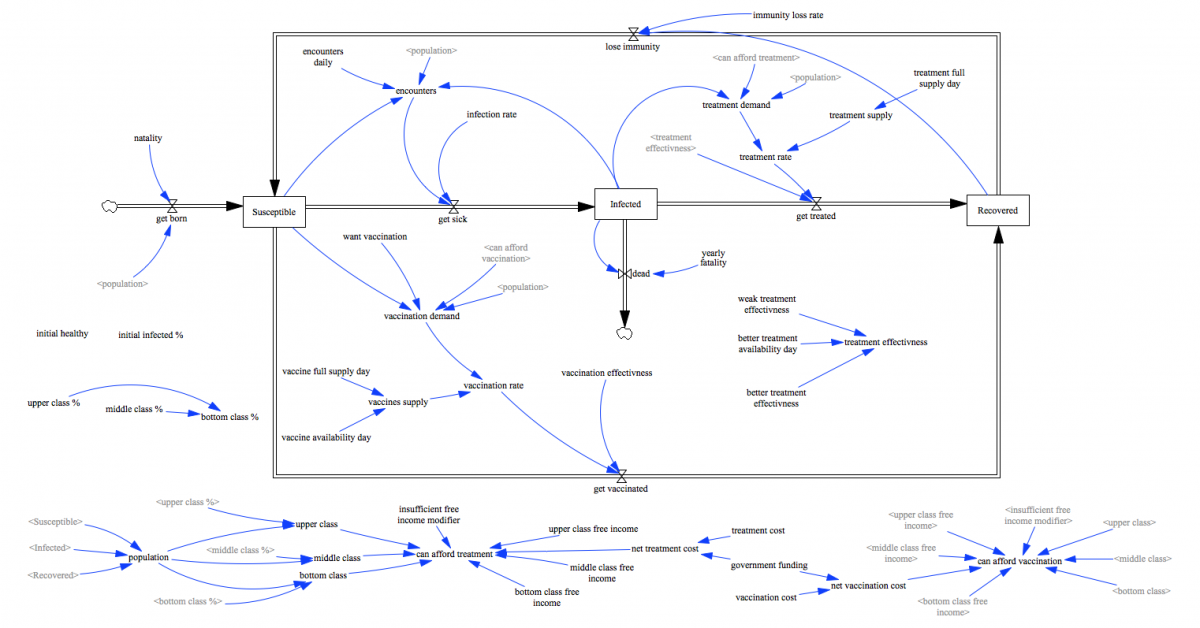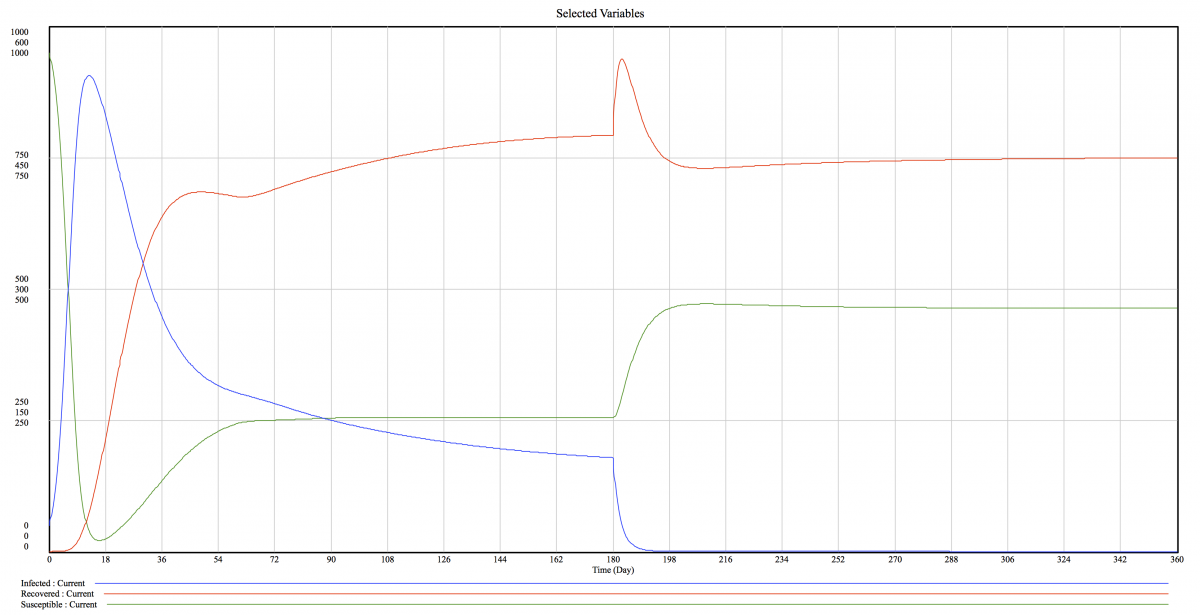Spreading of a fatal epidemic in a simple society
A fatal epidemic is starting to emerge in a simplified society.
Contents
Introduction
I have chosen a system dynamics simulation, since I found this type of models to be the most challenging out of all of the possibilities. For the purposes of this simulation, I chose the topic of Epidemic spreading, out of my own curiosity.
Problem definition
As the epidemic is starting to emerge, the major focus is on the influence of government-funding of healthcare, as well as distribution of the society into 3 groups based on their income.
Method
Since this simulation is perfectly suited for system dynamics, Vensim was used as the simulation software.
Model
The basic modelled principle of the epidemic spreading is based on the existing SIRS model, which is the perfect starting point for this simulation. The generic SIRS model was extended and adjusted to include vaccinations, limited supply of both vaccinations and treatment, and shifting effectiveness of the treatment, as well as spreading of the infection based on encounters between susceptible and infected persons.
Picture
Detail
The starting parameters of the model are the number of initial population, and the fraction which represents how many of those are infected. The population is split into the 3 classes based on their income - upper, middle and bottom, by a fixed fraction of the population. The classes are represented by their "free income" - in the meaning of income, which is left after all the necessary bills and other expenses are covered. Both treatment and vaccination have their costs, and included in the price calculation is also the government funding, which can be set anywhere between 0 and 1 - meaning no funding, and full funding respectively.
The economic part of the model is then summed up in the number of people, who can afford treatment and/or vaccination. That is represented by the number of people, who have bigger free income than the net treatment/vaccination cost. To take into account that even some percentage of people who cannot afford the treatment/vaccination can by some means get the money needed, there is a rate called "insufficient free income modifier". If a specific class cannot afford the treatment/vaccination, the percentage of people who will be able to afford it = class free income/net treatment cost*insufficient free income modifier.
The treatment has been split up to 2 "versions" - the first one, which is less effective, but is available from day 0, and the second one, which is available after 6 months, and has a much higher effectivity.
Results
The results are very interesting. While with no government funding, there is a huge spike at the time when a more effective treatment gets introduced, the same occurrence has almost no effect on the graph of full government healthcare funding, as the system has already been pretty much stabilised. Other than that, the whole behaviour of the functions is completely different, which was quite unexpected for me.
Graphs
Please note the different scales on the graphs!
Note
As the simulation has been made highly parametric, the effect of many more variables can be observed when fiddling with the model in the "SynTheSim" mode of Vensim.
Conclusion
The state of government funding of healthcare undoubtably has a huge impact on the spreading of an epidemic. However, there are many more parameters of the epidemic and the whole system, which have even bigger impact - ie. infection rate, fatality rate, treatment and vaccination supply and effectiveness. Thus, although government funding of healthcare has a big impact on the epidemic, it is only one of the key factors which contribute to this.


